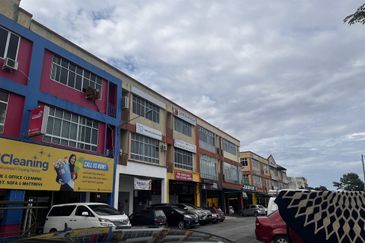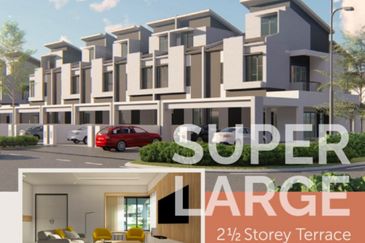
While green and sustainable buildings were all the rage at one time, the next trend could be in wellness buildings where a building is designed to promote health and wellness of its occupants.
“Wellness is the new sustainability. The focus has shifted from how to save energy in the building, to how the building affects people’s health and wellness. This is the future trend,” said immediate past president of Pertubuhan Akitek Malaysia (PAM) Ezumi Harzani in his presentation entitled “Designing for ‘Wellness’: Fact versus Fallacies” at Edgeprop.my Talk on Building for ‘Wellness’.
The talk was organised by EdgeProp.my in collaboration with Panasonic Malaysia on June 26 in Kuala Lumpur. More than 80 participants from the top management of property development firms attended the talk.
Ezumi stressed that human health and well-being are affected by building design and its operations, at places where people live, work and play.
“A building can be designed to promote health, for example a building can be built in such a way to encourage people to walk or to ‘exercise’ without them knowing it.
“People are more likely to walk if the walk is entertaining, just like when ladies go to shopping malls, they can walk for hours because it is a pleasant walk with things that interest them along the way,” he shared.
A WELL building should also provide enough breakout spaces to allow the change of pace in the working environment and thus help to reduce stress and raise productivity. (The WELL Building Standard® is a performance-based system for measuring, certifying, and monitoring features of the built environment that impact human health and wellbeing, through air, water, nourishment, light, fitness, comfort, and mind.)

“Facilitate access to green spaces. It gives people a relaxing, soothing image to look at. Indoor green spaces or gardens can improve indoor air quality too,” he said.
Another key aspect of a WELL building is its indoor air quality. In this regard, developers should use low-volatile organic compound (VOC) paints and coatings to reduce off-gassing of VOCs and to use unharmful chemicals to reduce contact with harsh chemicals.
“The building owner should also avoid permanent wall-to-wall carpeting. The selection of materials and fabrics in indoor furnishings – non-porous, tightly woven or membrane coated are important to prevent indoor air pollutants,” he noted.
Other elements that should be incorporated in a building designed for wellness include having enough water stations in the office, selecting the right light fixtures that reduce eye strain, selecing furniture that allows one to be active such as working spaces where one can sit or stand to work, designating an area for active activities and exercise, as well as placemaking for arts and culture to create peaceful spaces that induce happiness.
The facts and fallacies
Is it true that developers do not care about building for wellness?
“Indeed some developers will say they don’t care. However, if carefully explained, they will see it differently. They are aware of the ‘sick building syndrome’ caused by emissions of materials and finishes used in buildings, poor ventilations, humidity or bad lighting.”
Generally, Ezumi added, the market is aware of these issues and ready to factor in extra value to incorporate wellness in their buildings.
Is it true that new buildings won’t get sick so easily?
“Many contractors and developers believe newly completed buildings will run smoothly and will not get sick so easily. However, in reality, if a building is not properly designed and built, a building can get sick from the day it is open,” said Ezumi.
For example, most people say when they step into a new building, the building smells new — that is actually a sign of a sick building as one could be smelling VOC emissions from the building materials and paint.
Does a WELL building cost a lot more than a conventional building?
According to Ezumi, it will cost almost the same to achieve the same performance. However, maintenance for a WELL-designed building can be a lot easier and more cost-efficient.
“In the integrated design approach, the whole building is designed as an integrated system using smart processes, then certain synergies can be found. Where there is synergy, systems can be eliminated or downsized. Savings found in one part of the project can then be used to offset the other extra costs in other areas.
“The important fact about designing for wellness is it can be delivered without extra cost. Most aspects of wellness can just be a part of a ‘good design response’ and green design approach. Many energy and water efficient devices are almost the same price as the conventional devices if you get it from the right supplier”.

“If the client doesn’t want a WELL building, there is nothing we can do!”
Education and awareness among consumers on the benefits of a WELL building will be needed to raise market demand. Developers cannot do
anything if the client doesn’t want WELL building features, Ezumi said.
Would buyers pay extra for healthier buildings?
Yes, said Ezumi. He cited a survey carried out by The International WELL Building Institute (IWBI) that showed savvy buyers, ageing buyers and those who purchase for investment are ready to pay more, and among the reasons they cite were climate change and health.
Quoting IWBI, he said that the time has now come to elevate human health and comfort to the forefront of building practices and reinvent buildings that are not only better for the planet, but also for the people.
Is it true that only the base building is important, fit-out doesn’t matter?
It is not true that building fit-outs are less important than the base building when it comes to building for wellness, said Ezumi.
“Interior design and fit-outs are the direct elements that the occupants can see and feel. The interior and fit-outs which are designed and selected for wellness will give positive impact to the building occupants,” he shared.
Watch what this expert has to say about indoor air quality.
This story first appeared in the EdgeProp.my pullout on June 28, 2019. You can access back issues here.
TOP PICKS BY EDGEPROP

Muara Tabuan Light Industrial Park
Kuching, Sarawak

The Stride Strata Office @ BBCC
Pudu, Kuala Lumpur























